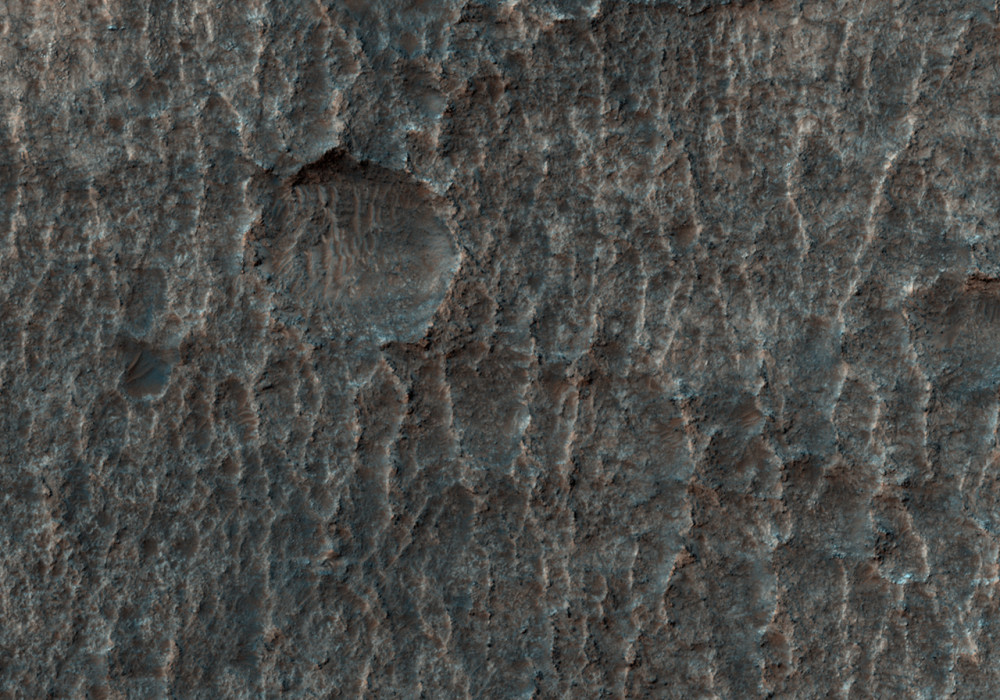This subimage shows part of the floor of an unnamed crater in the Southern Highlands, near Hellas Planitia. It depicts light-colored bedrock and darker wind deposits. This is a false-color image, enhanced to exaggerate the contrast between units.
The bedrock appears tan-colored and shows subtle signs of layering in places; see, for instance, the butte in the southwestern portion of the color subimage. Layering in terrestrial formations usually indicates that the rock-forming materials were deposited by wind or water.
The bedrock is crisscrossed by a dense network of rectilinear (lines that are parallel or at right angles) fractures; some can be followed for hundreds of meters. The fractures look bluish in color, indicating that they are occupied by materials that are somehow different from the bedrock. Perhaps wind-carried materials got trapped in the depressed fracture zones.
The two large, feather-shaped deposits towards the southeastern corner of the subimage are younger dune deposits. Dunes form when loose sand-sized materials are transported and deposited by a moving fluid, in this case wind. Their color—similar to that of the materials in the fractures—indicates that they did not originate from erosion of the local bedrock.
Written by: Sara Martinez-Alonso (19 March 2008)
More info and image formats at http://hirise.lpl.arizona.edu/PSP_005817_1515
Image: NASA/JPL/University of Arizona
